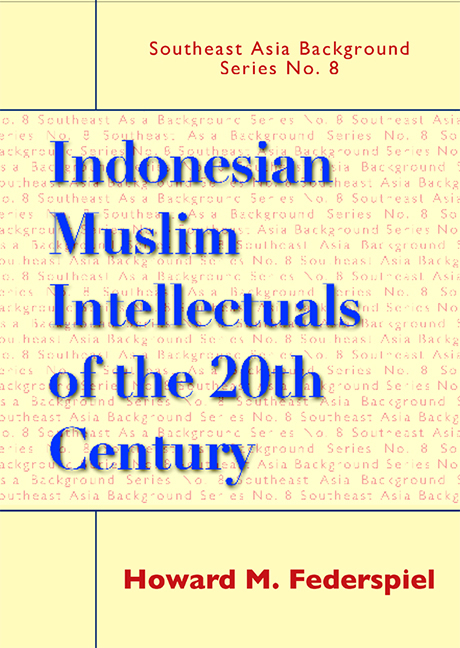2 - Early Twentieth Century Development
Published online by Cambridge University Press: 21 October 2015
Summary
It is important to understand the context of Islamic belief and practice in the area now known as Indonesia at the beginning of the twentieth century, in order to perceive the intellectual currents that occurred afterwards. At the time there were three major manifestations of Islamic religious activity. The first current was widely popular in society, crossing the spectrum of commitment to Islam between nominal and committed Muslims. It consisted of visitations to the tombs of holy men to ask for blessings and intercession, involved the use of charms and amulets to ward off evil, and promoted belief in good and bad spirits, which could be controlled by use of special prayers and incantations. The second current was concerned with mysticism, i.e., spiritual searching in which trances were attained through esoteric exercises, usually reciting the names of God or some pious phrase, such as the zikir. The esoteric exercises, particularly the ratib, in which several worshippers would sit close to one another and rock their bodies back and forth in unison while chanting the zikir, were frequently used in some sectors of society where they constituted a common form of participatory worship and/or entertainment. This current was strong in the committed community and among some nominal Muslim groups. The third current was connected with the general themes of worship and behaviour as described in the Qur'an and interpreted by the legal scholars of Islam. The emphasis on formal worship was lightly used by the general population, but highly regarded by those trained to be scholars in Islam. In general, reform movements in Southeast Asian Islam attempted to diminish the impact of the first two trends and raise the importance of the third.
JUSTIFICATION OF THE HOLY WAR
In the first quarter of the twentieth century the territory known now as Indonesia was mostly under the direct or indirect control of the Netherlands and was called the Netherlands East Indies. It had been the policy of the Indies administration during the nineteenth century to bring all of the territories and ethnic groups in the archipelago under its control.
- Type
- Chapter
- Information
- Publisher: ISEAS–Yusof Ishak InstitutePrint publication year: 2006



